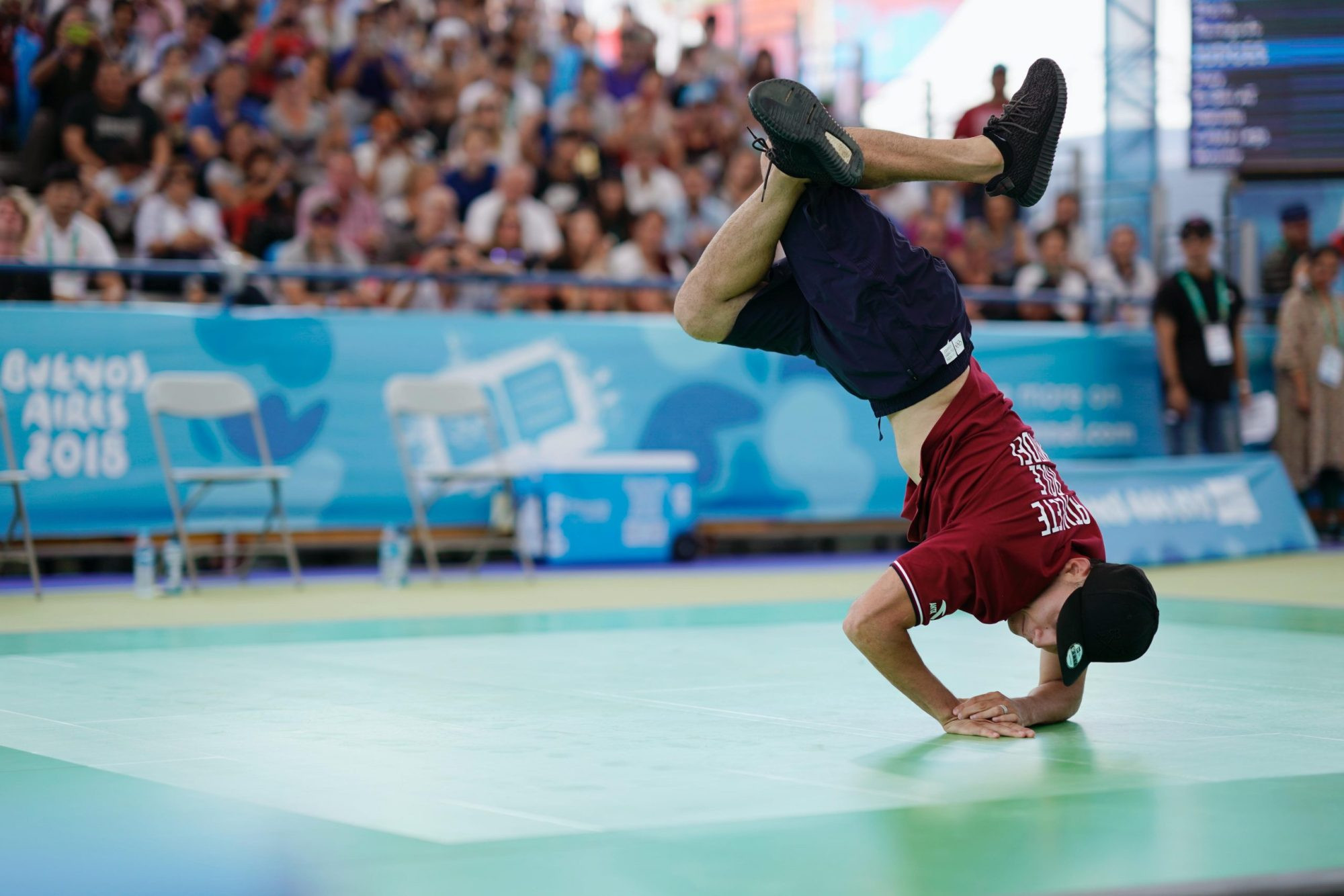Key Elements and Judging Criteria of Olympic Breakdancing: Olympics Break Dancing

Breakdancing, officially known as breaking, is a dynamic and captivating dance form that has gained global recognition, culminating in its inclusion as an Olympic sport. The essence of breakdancing lies in its intricate blend of power moves, footwork, freezes, and improvisation, all set to the rhythm of the music. This section delves into the fundamental elements of breakdancing and the criteria used to judge its execution.
Judging Criteria in Olympic Breakdancing
Breakdancing competitions are judged based on a set of criteria that assess the dancer’s technical proficiency, artistry, creativity, and musicality. These criteria are meticulously evaluated by a panel of experienced judges who score each dancer based on their performance.
Artistic Expression
Artistic expression is a crucial aspect of breakdancing, where dancers use their bodies to tell a story, evoke emotions, and engage the audience. Judges evaluate the dancer’s ability to convey a unique narrative through their movements, incorporating elements of storytelling, character development, and emotional depth.
Technical Proficiency
Technical proficiency refers to the dancer’s mastery of the fundamental elements of breakdancing, including power moves, footwork, freezes, and transitions. Judges assess the dancer’s execution of these elements, evaluating their precision, control, and overall technical skill.
Creativity and Originality
Creativity and originality are highly valued in breakdancing. Judges look for dancers who showcase innovative and unique moves, demonstrating a willingness to push boundaries and explore new possibilities. This includes developing original combinations of existing moves, introducing new techniques, and displaying a personal style.
Musicality
Musicality is a key element of breakdancing, as dancers must synchronize their movements with the rhythm, tempo, and mood of the music. Judges evaluate the dancer’s ability to interpret the music through their movements, demonstrating a deep understanding of the musical structure and flow.
Comparison of Judging Criteria in Different Breakdancing Competitions
The judging criteria used in breakdancing competitions can vary depending on the specific event, organization, and level of competition. However, the core principles of artistry, technique, creativity, and musicality remain consistent across different competitions.
| Competition | Artistic Expression | Technical Proficiency | Creativity and Originality | Musicality |
|—|—|—|—|—|
| Olympic Games | Highly emphasized | Crucial for execution | Valued for innovation | Essential for interpretation |
| World Championships | Significant emphasis | Essential for performance | Highly rewarded | Key for synchronization |
| Local Tournaments | Varies depending on the organizer | Often emphasized | Encouraged for individual style | Generally considered important |
The table highlights the common themes in judging criteria across different breakdancing competitions. While the specific emphasis may vary, the core principles remain consistent, ensuring a fair and comprehensive evaluation of dancers’ skills and artistry.
Impact and Future of Breakdancing in the Olympics

The inclusion of breakdancing in the Olympic Games has sparked significant discussions about its impact on the Games and the future of the sport. This move represents a shift in the traditional perception of the Olympics, incorporating a dynamic and culturally diverse art form that appeals to a younger generation.
Impact of Breakdancing on the Olympics
The inclusion of breakdancing has the potential to attract a younger audience to the Olympics, particularly those who are drawn to its energy, creativity, and athleticism. This younger audience is often considered less engaged with traditional Olympic sports, and breakdancing offers a fresh and exciting alternative.
Breakdancing also contributes to the increasing diversity of the Olympic Games. The sport has its roots in street culture and has been embraced by a diverse range of communities worldwide. This representation reflects the global nature of the Olympics and promotes a more inclusive and representative sporting landscape.
Future of Breakdancing in the Olympics, Olympics break dancing
Breakdancing is expected to experience significant growth and development as a competitive sport within the Olympic context. This growth will be driven by increased investment, professionalization, and the emergence of new techniques and styles.
The future of breakdancing in the Olympics will likely see a continued evolution of techniques and styles. As the sport becomes more competitive, dancers will push the boundaries of their abilities, incorporating new moves and incorporating elements from other dance forms.
Breakdancing’s inclusion in the Olympics has the potential to further elevate its status as a legitimate and respected sport. This recognition will encourage more young people to pursue breakdancing as a career, leading to a new generation of talented dancers and a more competitive landscape.
Olympics break dancing – The inclusion of breakdancing in the Olympics has sparked excitement and debate, with some questioning its place among traditional sports. However, the athleticism, creativity, and cultural significance of breakdancing are undeniable. This unique form of dance, which has evolved from the streets to the global stage, has captured the imagination of audiences worldwide.
To learn more about the journey of breakdancing from the streets to the stadiums, check out this insightful article: olympic breakdancing. The inclusion of breakdancing in the Olympics signifies a shift in the definition of sport and a recognition of the diverse talents that can be celebrated on the world stage.
The inclusion of breakdancing in the Olympics has sparked global interest in the art form, with athletes from diverse backgrounds showcasing their skills on the world stage. The competition, however, is not without its own tensions, mirroring the complex geopolitical landscape.
The recent conflict between Iran and Israel, a long-standing source of friction , serves as a stark reminder of the complexities that can exist even within the seemingly harmonious world of sports.